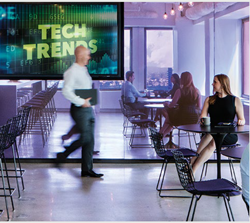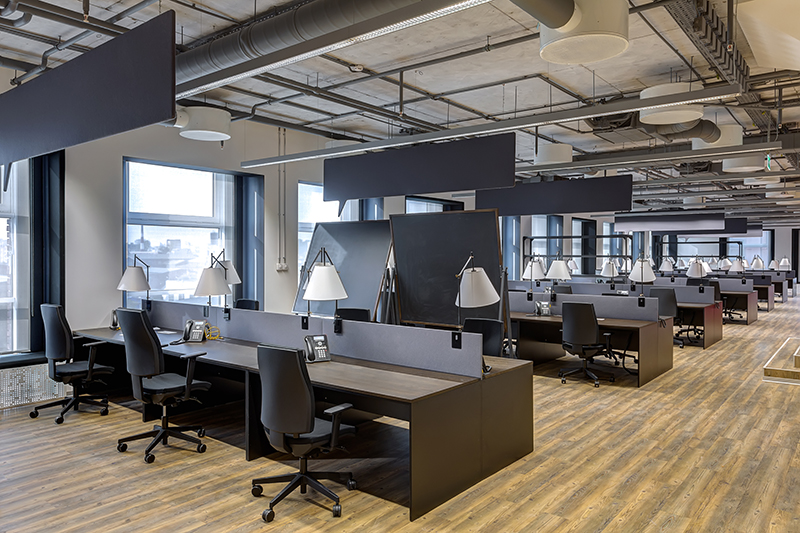Posted July 8, 2019
By Diane Hoskins and Andy Cohen
To lure top talent, employers must integrate technology and unique experiences into their spaces.
The future of cities is predicated on people. As engines of economic growth, urban areas are the life source of the built environment, with 80 percent of global GDP resulting from their output. The most vibrant cities are those that attract diverse talent with varied skills, perspectives and backgrounds. All of this is driving change and transformation in how people live, work and play.
Looking at the built environment, there is no place that is being more profoundly impacted than the workplace. To retain and inspire the best talent, the most successful organizations will be the ones that adapt their workplace strategies to focus on creating a destination with visceral experiences, an “always in beta approach” and purpose through space.








 According to a recent
According to a recent 
 With
With  Development and construction of new commercial real estate in the United States – office, industrial, warehouse and retail – generates significant economic growth at the state and national levels. This annual study, “The Economic Impacts of Commercial Real Estate,” published by the NAIOP Research Foundation, measures the contribution to GDP, salaries and wages generated and jobs supported from the development and operations of commercial real estate.
Development and construction of new commercial real estate in the United States – office, industrial, warehouse and retail – generates significant economic growth at the state and national levels. This annual study, “The Economic Impacts of Commercial Real Estate,” published by the NAIOP Research Foundation, measures the contribution to GDP, salaries and wages generated and jobs supported from the development and operations of commercial real estate. Open ceilings, with their exposed ductwork and industrial vibe have become popular – but trendy rarely equals inexpensive. For many years, omitting the traditional drop ceiling was assumed to be not just cooler but also to cost less. Common sense seemed to be that by choosing open ceilings, the cost of the drop ceiling was simply avoided, saving on labor, materials and time.
Open ceilings, with their exposed ductwork and industrial vibe have become popular – but trendy rarely equals inexpensive. For many years, omitting the traditional drop ceiling was assumed to be not just cooler but also to cost less. Common sense seemed to be that by choosing open ceilings, the cost of the drop ceiling was simply avoided, saving on labor, materials and time.